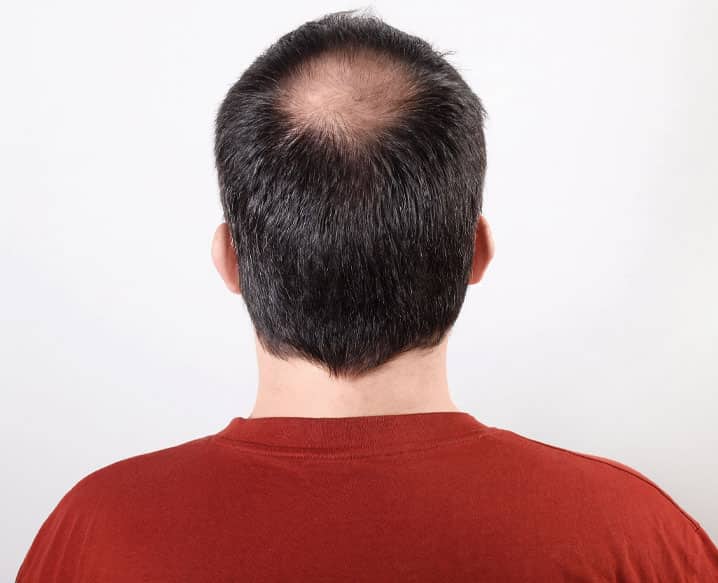A person’s life can be profoundly impacted mentally by hair loss, leading to feelings of worry, sadness, and low self-esteem. There are many causes of hair loss, but the most prevalent is hereditary hair loss, passed down through the generations. Possible causes include hormone imbalance, trauma, and systemic sickness. But has anyone considered why hair loss has become more common lately? Remember that a person’s diet, lifestyle, sleep habits, and exposure to the environment all impact the health of their hair, which in turn affects hair loss. In recent years, hair transplants have become the most widely used treatment for baldness, but is it the best option? We’ll learn more about this and be aware of the best hair transplant in Delhi. First, let’s determine how hair transplants work.
How Is a Hair Transplant Procedure Performed?
A hair transplant involves removing hair follicles from a donor site and transplanting them to a bald area. It is a problematic cosmetic surgical technique. The transplanted hair follicles originate from the permanent hair roots on the head’s sides and back. If there is not enough hair on the back and sides of the head, one can inspect other areas, such as the chest and beard.
What Hair Loss Treatment Methods Are There?
The descriptions of the several treatment options mentioned above are as follows:
- Temporary Support: For those losing their hair, temporary fixes like wigs, extensions, and artificial hair are often chosen. These are not long-term solutions to the issue of baldness; they can only temporarily cover it up. Because they need to be replaced often and require a lot of maintenance, they are exhausting solutions. Therefore, temporary assistance is not a suitable modality for long-term use.
- Medication: Two medications commonly used to treat hair loss are finasteride and minoxidil. These medications stimulate hair growth and halt hair loss in its tracks. Although the medications have been demonstrated to be beneficial, their effects are unknown and could alter if the medication is stopped. Due to possible side effects, these medications shouldn’t be taken for extended periods of time.
- PRP Therapy: Over the past ten years, PRP therapy has become increasingly popular as a treatment for hair loss. This treatment aims to increase hair growth and speed up cellular proliferation. Injecting platelet-rich plasma (PRP) increases the availability of growth factors in the surrounding tissue, hence stimulating the creation of new hair. This treatment method only benefits early hair loss due to severe baldness.
- Hair Transplant: Hair grafts are taken from the donor area and transplanted to the bald area. This is a less intrusive surgical treatment. The treatment was designed to use the back and sides of the head, the chest, the axilla, the pelvic region, and the area around the beard as donor sites. The advanced approach yields satisfactory results in a single session and requires four to nine hours per session.
The two most popular hair transplant methods are FUE and FUT hair transplants.
Hair grafts from the donor site are taken, divided into separate parts, and then each section is transplanted into the desired bald area in the FUT hair transplant procedure. Between 3000 and 3500 hair grafts may be obtained with this technique, producing considerable hair transplants possible.
The hair follicles used in the FUE hair transplant procedure are extracted from the donor area using a punch tool. The device is placed into the donor site to move the hair graft. These hair follicles are then used to treat the recipient region. This method works well for harvesting 2000–2500 hair grafts, making it suitable for transplanting hair from the scalp and face.
Why is Hair Transplant the Most Successful Hair Loss Treatment?
Hair transplant offers several benefits over other types of treatment, such as:
- Hair transplants are a permanent treatment for hair loss because they use permanent hair roots and preserve the original qualities of the root during the transplanting process.
- Hair transplants enhance hair growth and produce natural-looking outcomes. Selecting a hair transplant surgeon wisely is essential to maximizing the procedure’s benefits.
- During the healing period, hair transplants are painless and do not cause morbidity.
- There are no side effects from the surgery, and no additional precautions are needed. There are no adverse effects from the surgery, and no extra care is required. After the injured region has healed, it can be styled, cut, and colored like regular hair. Once the affected area has healed, one can treat them like normal hair and style, trim, and color them as one chooses.
Consult the Best Dermatologist in Delhi for a Hair Transplant
With the benefits described above, it’s evident that this is the best long-term treatment for baldness. To ensure the safety and success of the procedure, one should consult a skilled hair transplant specialist. One can consult at the state-of-the-art Dadu Medical Centre, which offers the safest, long-lasting, and most natural-looking hair transplants. The clinic is managed by an expert hair transplant surgeon, Dr. Nivedita Dadu, the best dermatologist in Delhi. She is one of India’s most reputable options for hair transplants; she guarantees the best long-term results.
The clinic is equipped with advanced facilities and technology. The doctor is adamant about the need for close observation to produce remarkable results and guarantees that each component is emphasized to the most significant degree feasible. The hair doctor is a world-renowned surgeon superspecialist recognized for her exceptional surgical skills and creative idea of creating a hairline that appears entirely natural. Make an appointment at Dadu Medical Center to learn more about hair transplants. The facility is located in Delhi’s Vasant Vihar, South Delhi and Rajouri Garden, West Delhi.

